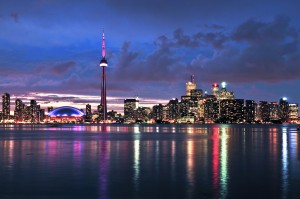 Toronto Population
Toronto Population
The current population of the city of Toronto is estimated to be about 2,791,140, which is an increase of about 6.7% from the last record of the population. The city is the most populous city in the entire country of Canada and the fourth most populous city in all of North America. Based on the total land area and the total population of the city, the population density of Toronto is approximately 11,630 people per square mile.
Demographics of Toronto
About 49% of the people living in Toronto are considered to be immigrants. For those immigrants living in the city of Toronto, the most frequent country of origin for the immigrants happens to be the Philippines and China. However, there are over 230 different ethnic origins living in the city of Toronto. In fact, 49% of the population is considered to be a visible minority. The largest of these visible minorities is South Asian, which makes up about 12% of the population. The Chinese population makes up about 11%, while the Black population makes up about 9% of the population. The top three ethnic origins are English (13%), Chinese (12%), and Canadian (11%).
Religion in Toronto
Of all those living in the city of Toronto, about 76% of that population identifies with a religious affiliation. The largest of these affiliations is the Roman Catholic Church, making up about 28% of the population. The next largest affiliation is the Protestant affiliation, which makes up about 12% of the population. The Muslim population makes up 8% of the population and the Hindu population makes up about 6% of the population. Lastly, the Jewish population makes up about 4% of the population.
Sports in Toronto
The city of Toronto has six professional sports teams: Toronto Maple Leafs, Toronto Raptors, the Toronto Rock, Toronto Blue Jays, Toronto Argos, and the Toronto Football Club. The Toronto Maple Leafs participate in the National Hockey League and the home stadium is the Air Canada Center. The Toronto Raptors participate in the National Basketball Association and the home stadium is also the Air Canada Center. The Toronto Rock play in the National Lacrosse League and also in Air Canada Center. The Toronto Blue Jays participate in Major League Baseball and play in the Rogers Center. The Toronto Argos participates in the Canadian Football League and also play in the Rogers Center. Lastly, the Toronto Football Club participate in Major League Soccer and play at BMO Field.
Toronto Climate
Toronto has a humid continental climate, with warm, humid summers and cold winters. The city experiences four distinct seasons, with considerable variance in day to day temperature, particularly during the colder weather season. Owing to urbanization and its proximity to water, Toronto has a fairly low day-night temperature difference. The denser urban scape makes for warmer nights year around and is not as cold throughout the winter than surrounding areas; however, it can be noticeably cooler on many spring and early summer afternoons under the influence of a lake breeze. Other low-scale maritime effects on the climate include lake-effect snow, fog and delaying of spring- and fall-like conditions, known as seasonal lag.
Toronto Economy
Historical Population of Toronto
Historically, the population of the city of Toronto has increased continuously since the foundation of the city. The first record of the population is in 1861 when the population was approximately 65,085. The population then grew to over 2.6 million people by the year 2011 and is now almost 2.8 million.
| Year | Population |
| 1861 | 65,085 |
| 1901 | 238,080 |
| 1931 | 856,955 |
| 1941 | 951,549 |
| 1951 | 1,176,622 |
| 1961 | 1,824,481 |
| 1971 | 2,089,729 |
| 1976 | 2,124,291 |
| 1981 | 2,137,395 |
| 1986 | 2,192,721 |
| 1991 | 2,275,771 |
| 1996 | 2,385,421 |
| 2001 | 2,481,494 |
| 2006 | 2,503,281 |
| 2011 | 2,615,060 |
Projected Population of Toronto
The population of the city of Toronto is expected to continue its rise in population over the next 23 years. By the year 2016, the population will have topped 3 million and by the year 2036, the population will have topped 3.5 million.
| Year | Population | Percent Increase |
| 2016 | 3,011,200 | 7.9% |
| 2021 | 3,155,800 | 4.8% |
| 2026 | 3,313,600 | 5.0% |
| 2031 | 3,473,900 | 4.8% |
| 2036 | 3,630,900 | 4.5% |


